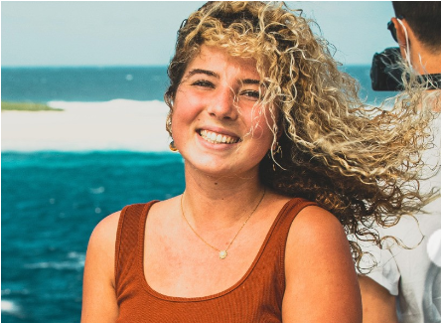Gwennaïs Fustemberg, a marine biologist involved in the Madcaps project on micro-plastics, describes her daily world on board.
A tale inhabited by a red giant and a manta net…
The red giant
On a quay I know well, a red giant, rendering every other boat, every machine, every tiny person, has just arrived.
On board, silhouettes go up and down stairs in all directions like a dancing ballet to the rhythm of the engine noise.
I climb aboard and set off for a month and a half crossing the Indian Ocean to discover its riches, its hidden lands and the footprints left by mankind.
Weeks studying the surface of our oceans to understand how it transports our plastics to the four corners of the globe.
The manta net, its mouth open, its two wings helping it to surf the waves, sucks up microplastics that were once bottles, corks or fishing tackle… Could these small plastics, not necessarily good news for marine life, also be carriers of coral pathogens ? That’s the question we’re going to try and answer aboard this giant of the seas.
Sometimes by day, often by night, this net is released. The ship slows down to 2 knots, the moment seems suspended in time. For 1h30, it glides along the surface of the ocean, following the movements of the waves and fighting against the wind. Flying fish, red-footed boobies and the laughter of the sailors accompany him. At times, I feel almost jealous of this net, which can touch the water while I, from the deck, can only see it.
The sound of the crane signals the end of the swim for the manta, who has to come back up to show us what he’s collected. Pieces of plastic whose former life is now difficult to distinguish, fish photophores still glistening, and small seaweeds – this is today’s harvest.
The microplastics captured and stored in their box will have to wait until the end of the sea giant’s voyage to be analyzed and reveal their secrets…

Gwennaïs Fustemberg
Marine biologist Gwennaïs Fustemberg is a member of the BestRun association.
MADCAPS project (Microplastics AnD Corals Pathogens)
